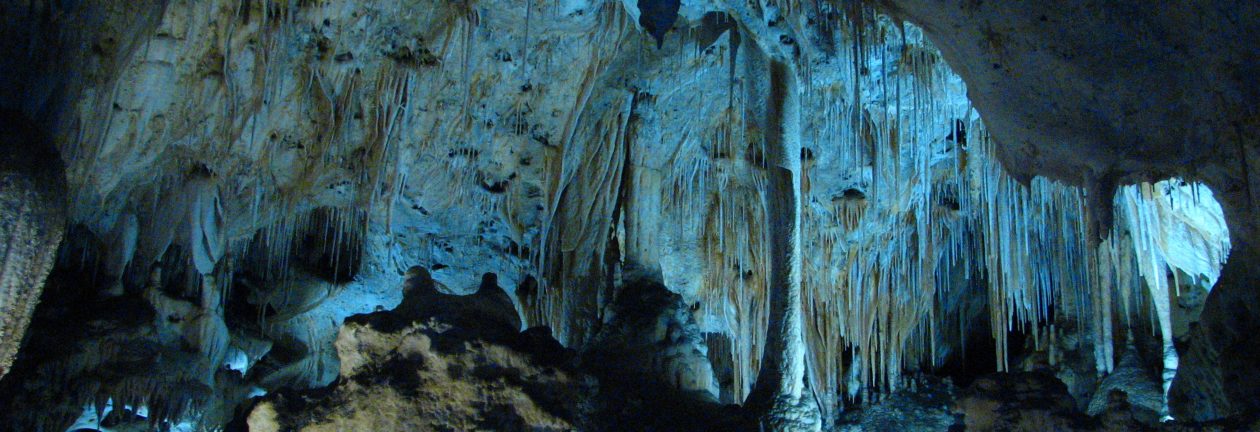Vigan, Philippines
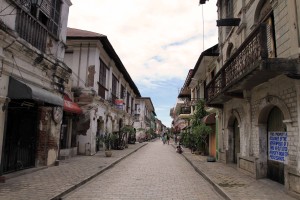
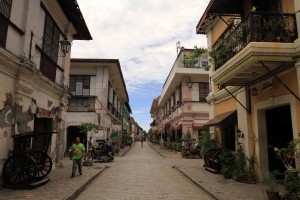
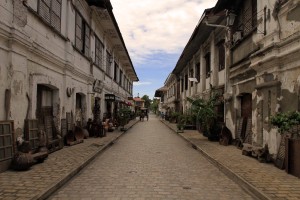
Woke up today and got ready to see Vigan in the daylight. I walked out of the hotel and headed straight over to Calle Crisologo, that cobblestone street with Spanish colonial buildings I had walked down last night. The first major difference I immediately noticed about Vigan from night to day was that during the day Vigan was very active and full of motorbikes attached with passenger cars, kalesas (horse-drawn carriages), automobiles, and pedestrians. It surprised me that, for such a small town, the streets were constantly streaming with traffic. Fortunately Calle Crisologo is closed to all thru-traffic and, other than the occasional bike or car, the streets are void of all traffic except for a few kalesas passing by. I walked down the street, heading south, and had very quickly passed through it – it is a short street. At the southern end of the street I viewed the Vigan Mansion (one of the many historic buildings still preserved in this town) and then walked over to Simbaan a Bassit (an Ilocano term meaning “Small Church”), which is a cemetery chapel that was very quaint inside.
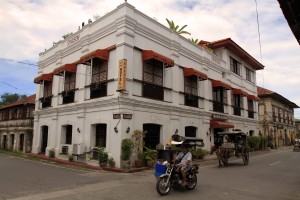
From the chapel I walked over to the Vigan Public Market. It is a two-story open building with a number of stalls, many of which sold the usual kind of goods you’d find in a convenience store. On the second floor there were specific areas for types of food. There fruit, vegetable, seafood, poultry, and pork sections. The poultry section had de-feathered, dead chickens stacked on top of each other, the pork section had limbs, snouts, intestines, and various other parts laid out, and the fish section mostly had dead fish on ice, though at one stall, there were several fish still gasping for air (talk about fresh) – obviously fascist vegetarians would be appalled.
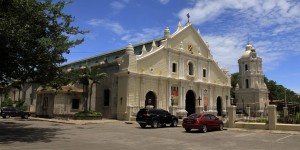
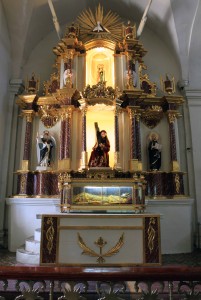
I then left the market and continued my trek around Vigan. I was now heading north and toward the town center. My next stop was St. Paul’s Metropolitan Cathedral. It was originally built in 1641 and became a cathedral in 1758 when the seat of the diocese of Nueva Segovia was transferred from Lal-lo, Cabayan to Vigan. Having been damaged by earthquakes throughout its history, it was reconstructed from 1790 to 1800 to its present form, in a style that is known as “earthquake baroque” – a style designed to minimize damage caused by earthquakes. Inside were many altars adorned with figures of Christ, the Virgin Mary, and various Saints; there were also numerous paintings to appreciate. After walking around inside, I then walked back outside and walked around the Archbishops residence before heading over to the Plaza Salcedo, which has a 17th century monument in its center for San Juan de Salcedo. The monument is surrounded by a modest reservoir that has been all but emptied.
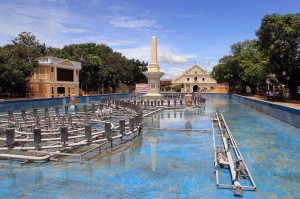

After walking around the plaza and observing all the old buildings surrounding it, I walked in to the nearby Jollibee, a chain restaurant in the Philippines (basically their version of McDonalds. I sat down for lunch and had an Aloha burger (beef patty with slice of pineapple, bacon, lettuce, and sauce); it’s probably the closest one can get to eating the fictional Big Kahuna burger. After washing down my tasty burger with some sprite, I then walked back to Calle Crisologo, but the sun had already began to set causing one side of the street to be shaded whilst the other side remained bright – this made it far from “picture-perfect”. From there I walked back to the hotel, my temporary residence, and worked on the website for quite some time.
As it darkened, a rain ran through town, and soon enough was gone. I then walked out to a nearby cafe to eat some local food. I had a plate of bagnet (double-fried pork fat), longaniza (pork sausages made from genuine intestine and dipped in a vinegar), and garlic rice. I didn’t care for the bagnet, but the longanizas were amazing. I also drank a Hefeweizen to go with it (not local, produced in Germany). After dinner I retired back to my hotel room, and – after taking care of some late night personal business – I finally laid my eyes to rest.
